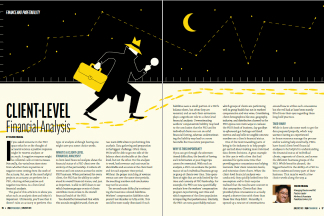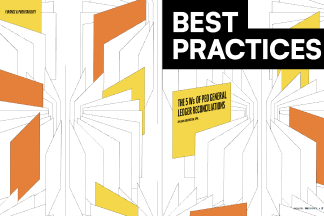Embracing a systematic approach to problem-solving, I’ve always favored simplifying actions to ensure traceable and reproducible results. So when news of a futuristic tool capable of streamlining mundane, manual tasks and redirecting focus towards value-added client endeavors reached my ears, I was very excited. The promise of Artificial Intelligence (AI) in reshaping the landscape of business operations, particularly within the realm of unemployment insurance, is a prospect I find particularly compelling.
The upheaval brought about by the COVID-19 pandemic served as a stark wake-up call, underscoring the imperative to revamp the technological architecture underpinning pivotal programs. This year, I attended many industry conferences and was delighted to see that key players are actively exploring the integration of AI into the framework of unemployment insurance, sparking fervent discussions across industry platforms and drawing keen interest from governmental bodies. For many organizations, federal and state agencies proactive steps are being taken to begin the conversation of how best to implement AI into unemployment insurance processes.
From my vantage point, the infusion of AI into the unemployment sector holds the key to unlocking a multitude of advantages that could revolutionize the efficiency, accuracy, and cost-effectiveness of unemployment insurance operations. These areas are very important to
maintaining the integrity of the unemployment program, an aspect that undoubtedly resonates with the dedicated individuals immersed in the day-to-day intricacies of unemployment insurance operations. AI’s potential lies in its capacity to ease the burden of manual processes and to counteract the talent drain that has been a consequence of recent industry disruptions within the realm of unemployment claims management.
In light of this, let’s delve into specific areas where the integration of AI can potentially trigger a transformative ripple effect:
- Automated Document Processing: Leveraging cutting-edge advancements in business rules and machine learning, states and PEOs can automate the processing of essential documents, slashing manual efforts while expediting critical functions like adjudication and benefit calculations.
- Fraud Detection: By harnessing the power of AI algorithms, the industry can fortify its defenses against fraudulent claims through the identification of suspicious patterns and irregularities, leading to a reduction in overall UI costs.
- Natural Language Processing for Communication: By deploying AI-driven NLP algorithms, the industry can effectively analyze client communications, ensuring timely and tailored responses to inquiries.
- Workflow Automation: AI streamlines routine tasks, empowering human resources to focus on complex cases and critical decision-making processes.
- Data Analytics and Reporting: Real-time analytics generated by AI systems offer invaluable insights, facilitating informed decision-making and continuous process improvement.
- Personalized Support: AI-driven personalized recommendations aid claimants in accessing reemployment services or training programs, expediting their return to the workforce.
From automated document processing to fraud detection and personalized support for claimants, the multifaceted applications of AI holds the key to streamlining operations, enhancing efficiency, and fortifying the integrity of the unemployment insurance program. Amidst the excitement and anticipation, the overarching objective remains crystal clear – to bolster the industry’s resilience and fortify its capacity to serve both claimants and stakeholders with unwavering efficiency and efficacy. As the industry prepares to embrace this transformative journey, the future of unemployment insurance stands poised to be redefined by the thoughtful integration of AI-driven solutions, heralding a new era of operational excellence and client-centric service delivery.
-
SHARE
- Copy to clipboard




